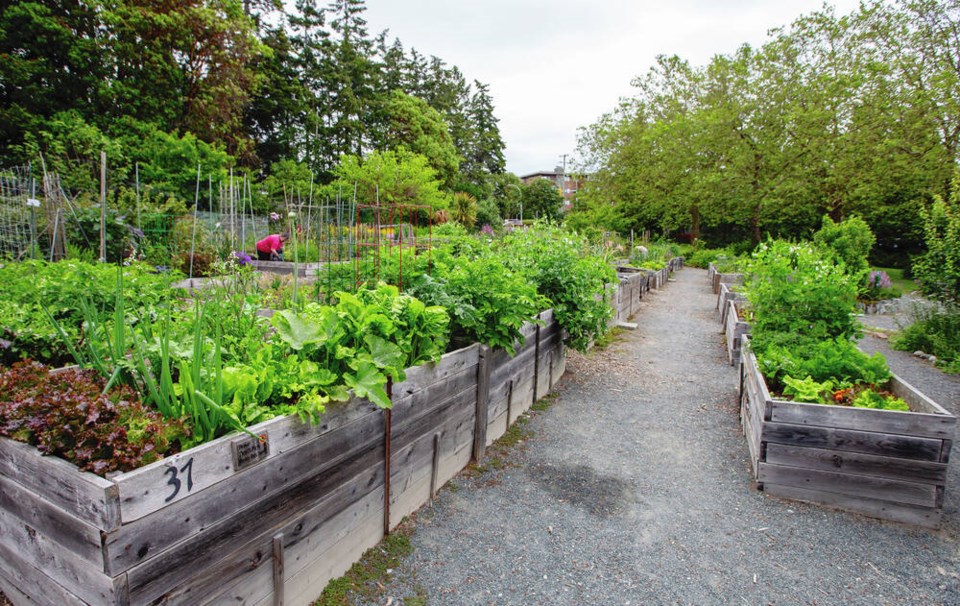You know how you sometimes mix up Cadboro Bay and Cordova Bay, or say Cowichan Valley when you mean Comox? Thanks to a profound ignorance of horticulture, I do that with shrubbery.
“Your big red chlamydia is spectacular,” I enthused to one woman, referring to the flowering camellia outside her home.
This was at the annual Esquimalt art and garden tour, an event that combines two of the subjects of which I am most ignorant. (Had they managed to work in calculus, it would have been a perfect trifecta.)
Being clueless about plant life is not something you’re supposed to admit in Victoria, the City of Gardens. It’s like being the only guy from Saskatchewan who can’t skate.
Gardening fits the capital’s climate and culture. It is easily Victoria’s most popular pastime, well ahead of the city’s second-place hobby, self-righteous indignation. I once read a marketing report that said we have more gardeners than golfers, runners and curlers combined.
That would explain our treatment of celebrity gardeners. When Britain’s Harry Dodson, the kindly old host of television’s The Victorian Flower Garden, paid us a visit, he was mobbed like Mick Jagger, the unkindly old host of the Rolling Stones.
In 2021, author M.A.C. Farrant released an entire book, One Good Thing, in the form of letters to the TC’s legendary gardening columnist, Helen Chesnut.
This makes me feel good about our community, because it’s comforting to live somewhere that cultivates so many gardeners — people who, in an age that demands instant gratification and dismisses expertise, still have enough patience and knowledge to grow their own food.
It’s a statement of character: Gardeners return library books on time, never take more than nine items to the express checkout, listen more than they speak and never speak at all once the movie begins. Non-gardeners get road rage, drop F-bombs in public, abuse health-care workers and invade Ukraine.
This is why while I don’t really want to garden, I do want to be a gardener. It’s like wearing a Good Citizenship Medal.
Alas, I do not have a green thumb. I hoped to inherit one from my father but got his hairline instead. (Sometimes I get an orange thumb when eating Cheezies, but that’s different.)
My dad could grow corn as sweet as the first blush of love, and tomatoes as juicy as a rumour, but he raised a couch potato for a son.
This, in fact, makes me representative of most Canadians. Over the past few decades, food has become so cheap and plentiful, relatively speaking, that vegetable gardens have largely disappeared. By 2008, when Statistics Canada said the food portion of our budgets had fallen to an all-time low, the Composting Council of Canada estimated that just one in three of us still grew our own produce.
Why would you spend your weekends weeding when a head of lettuce trucked 1,500 kilometres from California sells for half the price of a bottle of water?
And in a city where bare land goes for hundreds of thousands, even millions of dollars, why would builders leave space for a garden that produces $40 worth of potatoes? Today’s real estate realities don’t let you grow anything except deeper in debt.
Things are changing, though. We have been warned for several years that the Cheap Food Era, as it is known, is coming to an end. By 2019, Canadian food bills had crept up to 11.8 per cent of household disposable income.
Then came the pandemic, which not only resulted in a spike in prices but meant we couldn’t find some foods at all — a shock to people who had grown used to buying whatever they wanted to eat, whenever they wanted to eat it. (Strawberries in January? Really?)
The fragility of the supply chain was highlighted further by last year’s storms, the ones that severed the railroads and highways through the Interior and left fish swimming where Fraser Valley chicken farms used to be.
The waters may have receded but prices continue to rise: Statistics Canada says the nation’s food bills rose almost 10 per cent between April 2021 and this May.
“Enough!” I declared after the garden tour. “We must become more self-reliant, unleash our inner Amish, reap the bounty of the soil.”
“Define ‘we,’ ” she replied. “And you’re standing in my lettuce.”



